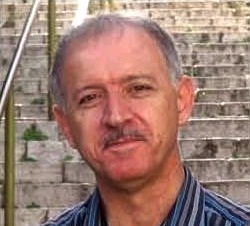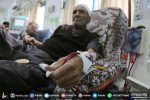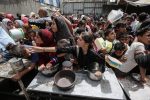The Israeli Knesset recently passed a law allowing the state to deport the families of Palestinian attackers from within Israel or occupied East Jerusalem.
Under the legislation, family members accused of having advance knowledge of such an attack, or who express “support or identification with the act of terrorism”, could be deported to Gaza or elsewhere, depending on the circumstances.
This new law appears to fit with Israel’s overarching goals in Gaza and Palestine more generally. The situation in Gaza, particularly in the north, provides a clearer picture of these plans.
After more than 55,000 Palestinians from Jabalia reportedly fled south, Israeli army general Itzik Cohen told reporters that “there is no intention of allowing the residents of the northern Gaza Strip to return to their homes”.
Cohen added that humanitarian aid would only be made available in the south, as there were “no more civilians left” in the north. (An Israeli army spokesperson subsequently said his words had been taken out of context and did not reflect the military’s “objectives and values”.)
The mass expulsion of residents from Jabalia has been accompanied by Israel’s widespread destruction of buildings and infrastructure throughout northern Gaza, and the killing of at least 2,000 people. Across the besieged territory, the damage is so severe that aid agencies have warned it could take centuries to rebuild.
A detailed operations map, which covers the northern areas of Beit Lahia, Beit Hanoun and Jabalia, suggests that Israel is effectively – but quietly – implementing the Generals’ Plan, a genocidal strategy to ethnically cleanse Gaza that has faced widespread international condemnation.
Genocide and permanent occupation
Israel’s recent creation of the Netzarim Corridor sliced Gaza in half, and as the army has zoned in on the north, most Palestinians have been pushed south of the corridor. The ultimate aim appears to be the annexation of the entirety of northern Gaza, creating space for Israel to expand its settlements and deepen its control over vital trade projects in the Mediterranean.
In addition, the recent appointment of Israel Katz as defense minister raises the possibility of reviving a project he has long promoted: the creation of an artificial island that Israel would use to control and monitor aid to Gaza.
Amid the challenges of implementing a mass displacement from Gaza to Egypt’s Sinai – a notion Cairo has refused to entertain – it appears Israel is settling instead on a project to ethnically cleanse and annex the northern part of the enclave, barring displaced people from returning north of the Netzarim Corridor.
The new law enabling the deportation of families of Palestinian citizens of Israel and residents of occupied East Jerusalem is further evidence of Tel Aviv’s resolve to maintain its annexation and occupation of northern Gaza.
By specifying Gaza as a potential destination for those being deported, the legislation suggests that the territory will remain under Israeli control. International law prohibits deportation or the revocation of citizenship without the prior agreement of the state to which the deportee is being sent – although Israel is a habitual violator of international law.
The Generals’ Plan was not the initiative of a rogue Israeli official, but rather appears to reflect a broad consensus and the coordination of high-ranking government circles.
Amid international legal constraints, the Israeli government cannot officially declare policies of genocide, ethnic cleansing, permanent occupation and annexation – but on the ground, this is what has been happening. At its core, the Generals’ Plan is no different than former Defense Minister Yoav Gallant’s declaration last year that Gaza would receive “no electricity, no food, no fuel” after the 7 October Hamas attack.
Israel’s actions point to a broader, emerging strategy that aims not only to reoccupy Gaza and sever it geographically, but also to reshape Palestine as a whole. In this context, northern Gaza would be annexed, while the south would become an enclave for displaced Palestinians – whether from the north, or those deported from within Israel or East Jerusalem.
Effectively, the southern Gaza Strip would serve as a barren point of exile for an increasingly dense population, devoid of livable conditions.
-Ameer Makhoul is a leading Palestinian activist and writer in the 48 Palestinians community. He is the former director of Ittijah, a Palestinian NGO in Israel. He was detained by Israel for ten years. His article appeared in the Middle East Eye.











